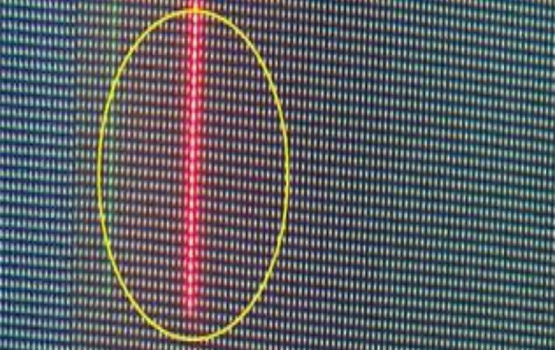Why Does the "Caterpillar" Phenomenon Happen on LED Displays?
What Is the "Caterpillar" Phenomenon?
The "caterpillar" is a phenomenon that has been explained in the LED display world as a process by which one defective LED pixel will make all of its surrounding pixels on the same line malfunction. On scan-type LED displays, when a single LED pixel short circuits, it can damage control of the entire vertical stack of pixels' signal, with a line stuck-on. It's evident as a hot "caterpillar" along the screen face. If the short circuit is initiated once, the impact will continue to be seen as long as the screen is still powered up and scanning, even when no picture is being shown.

Why Screen Damage?
The LED pixels are potted with potting glue in general, but the glue itself is hygroscopic, i.e., tends to draw water from the air. Since the screen is removed for extended durations, water seeps into the LED beads. When turned on again, internal electronics of such wet LEDs become heat-swollen due to which different materials expand to different extents, but the same may cause wire bond failure inside or short circuiting, creating multiple dead pixels or even a "caterpillar" effect.
Prevention of "Caterpillar" Phenomenon in LED Displays:
1. Water and Moisture Protection:
Environmental Control:
Ventilate correctly and reduce indoor humidity. In rainy months or in high humidity, air conditioning or dehumidification should be used.
Nano Coating Technology:
Use nano coating shielded LED screens to enable prevention of salt spray corrosion and moisture corrosion, enhancing screen life and reducing the incidence of "caterpillar."
Waterproofing Treatment:
For outside mounting, seal correctly the cabinets and modules to achieve water exclusion.
Regular Inspections:
Examine inside the LED display cases for water intrusion, seepage, or condensation on a regular maintenance schedule.
2. Scheduled Maintenance:
Dehumidification Programs:
For indoor application, offer automatic or manual dehumidification routine, especially in damp conditions — e.g., operation with air conditioning or addition of desiccants.
Scheduled Use:
Turn on the screen at regular intervals. In humid situations, provide at least 2 hours of use a week to chase away moisture buildup.
Inspection and Cleaning:
Periodically clean the screen by wiping out dust or dirt to prevent short circuits or display degradation.
3. System Optimization:
Clock Settings:
Adjust the system clock to prevent refresh timing error causing caterpillar effect.
Stable Data Connections:
Tighten the data cables firmly in place to preserve signal integrity or to prevent pixel faults.
Software Updates:
Update the LED control system software to gain the benefit of performance enhancement and bugs correction.
- Previous Article:What Are the Ways to Implement Touch Interaction on LED displays?
- Next Article:No content for the time being



